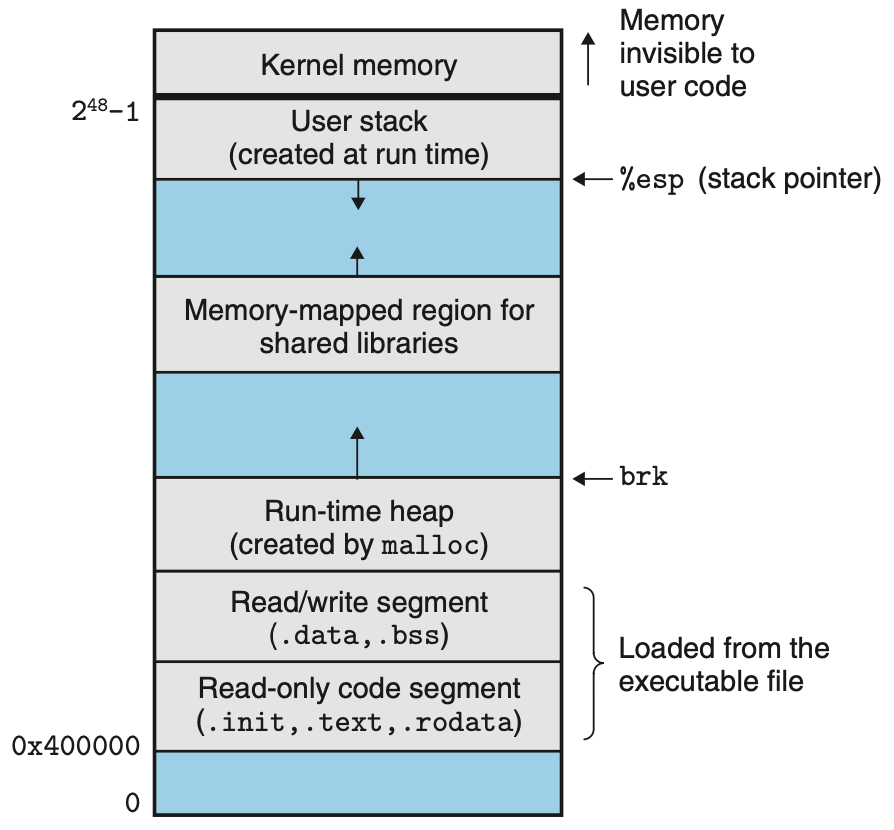Overview
A process is an instance of a program in execution. Each program in the system runs in the context of some process
Process Address Space

Context Switching
The kernel is not a separate process, but rather runs as part of some existing process
State
- Running - Process is either executing, or waiting to be executed and will eventually be scheduled by the kernel
- Stopped - Process execution is suspended and will not be scheduled until further notice
- Terminated - Process is stopped permanently
Process becomes terminated for one of three reasons:
- Receiving a signal whose default action is to terminate
- Returning from the
mainroutine - Calling the
exitfunction
Creating Processes
Parent process creates a new running child process by calling int fork(void):
- Returns O to the child process, child’s PID to parent process
- Child is almost identical to parent:
- Child get an identical (but separate) copy of the parent’s virtual address space.
- Child gets identical copies of the parent’s open file descriptors
- Child has a different PID than the parent
Reaping Child Processes
When process terminates OS keeps it around until it reaped by it’s parent, because parent may want an exit status of the child. It still consumes system resources: exit status, various OS tables
Reaping:
- Performed by parent on terminated child (using
waitorwaitpid) - Parent is given exit status information
- Kernel then deletes zombie child process
If any parent terminates without reaping a child, then the orphaned child will be reaped by init process (pid 1). So, only need explicit reaping in long-running processes e.g., shells and servers